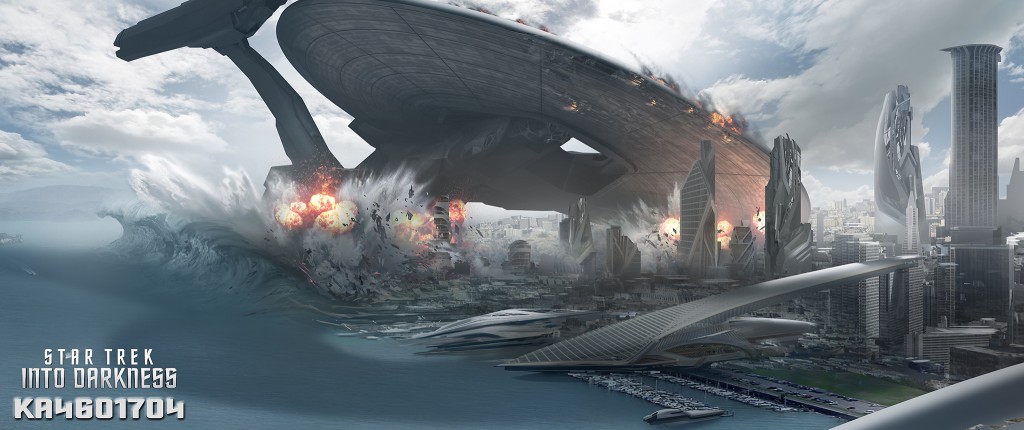FX Civil – Star Trek Into Darkness
I have always been fascinated by the incredible visual effects in blockbuster movies and video games. FX Civil is where I break down a movie or video game that implemented civil engineering and architecture in a believable and incredible way. I hope that I can learn from case studies of amazing special effects such as these but, let’s be honest, these types of visuals are just awesome and should be appreciated. While Civil FX is the art of approaching special effects from a civil engineering point of view, FX Civil is where we approach civil engineering from a special effects point of view.
With our third child arriving just a few weeks ago, we don’t find many opportunities to deliberately go out and rent a movie and the trips to the movie theater (for non-animated films) are especially rare. Fortunately someone invented Netflix and sometimes they even have a good mind-numbing blockbuster to blank out with. [Side note: with 2 kids at the cartoon watching age that still aren’t old enough for school we recently received a warning from our Internet provider as we had exceeded 200 GB in a single month!]
I can’t do much to help with the baby in the middle of the night but occasionally I will stay up with him when he just won’t go to bed so his mom can get some sleep. A few nights ago I was preforming such a (self-described) chivalrous act when I came across Star Trek Into Darkness on Netflix. It had ridiculously high ratings and I am a sucker for the good visual effects that I was certain were coming, so I turned it on.
It really was a great film and I am actually considering watching at least some of the parts again if such a late night presents itself. The plot was unpredictable, the acting was great (Chris Pine is brilliant as Captain Kirk) and the visuals were eye-popping.
Two great cities got the futuristic beautification in Into Darkness: London and San Francisco. Apparently the future of architecture is really tall buildings because that is what both of these cities received. There were a few shots of bridges and roads, but transportation is more airborne in the year 2260 with floating cars and flying helicopter/airplane type vehicles so they didn’t really need the transportation infrastructure to resemble anything we have today. I’m not an expert of either of these cities, but a few of the buildings looked recognizable from today and San Francisco was especially identifiable with the bay in full view in at least one scene.
While the engineering and architecture played for nice eye candy, there was another aspect of the movie that related to civil engineering and especially caught my eye. It was one of the final scenes where a giant star ship crashes into San Fran (sorry spoiler police, but just go watch the flippin’ show if you haven’t seen it yet). As the ship crashes into the city and the ultra-skyscrapers it kind of peels some of them off the skyline like a lawnmower clipping the tallest grass. Concrete is seen exploding and other materials are breaking and falling.
While I absolutely loved this scene (see below for the best part of it), it didn’t feel believable when I watched it again with my engineering goggles on. The buildings seemed too ‘flaky’. They just kind of exploded against the ship which looked nice, but I can’t imagine happening in real life. Skyscrapers are made of steel for strength (at least in our day and age) and there would probably be a little bending before a brittle break like that.
What they did get right was the dust. This seems to be a theme that special effects didn’t really understand until after 9/11, but when large buildings break you don’t see much more than dust which mostly comes from the vaporization of concrete. Into Darkness pulled off a nice balance of real material effects and aesthetics for the film despite my minor issue with the brittle buildings.
Modeling and rendering were essentially perfect but Hollywood kind of has that stuff down by now- at least for inanimate objects.
Did you see Into Darkness and, if so, what did you think?


